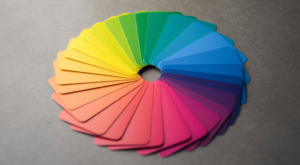Your product’s got the goods—now make sure it’s dressed to impress with these 10 Amazon product packaging design tips!
In a crowded marketplace, having a great product isn’t always enough. When sales don’t meet expectations, many Amazon sellers start to doubt if their product truly resonates.
The reality? Even the best products get overlooked if the packaging doesn’t captivate. Packaging is your first and only chance to grab attention—or lose it. Overlook this, and you risk fading into Amazon’s crowded shelves.
Smart packaging design elevates your product, grabs attention, and conveys quality instantly. Keep reading to discover 10 effective packaging design tips our Amazon agency experts use to make your packaging work as a powerful sales tool.
Table of Contents
Why Smart Amazon Product Packaging Design Tips Are Valuable
In Amazon’s competitive landscape, packaging is more than just a container—it’s a direct sales tool that boosts visibility, drives purchases, and builds loyalty. Here’s why investing in smart packaging design matters:
Packaging Grabs Attention
81% of consumers have bought a product because the packaging caught their eye. Standout packaging makes a strong first impression, helping products shine in crowded listings.
Design Impacts Buying Decisions
72% of consumers say packaging influences their purchases. Quality design signals value, leading to higher conversions.
Better Packaging Can Increase Revenue
30% of companies see revenue growth after improving packaging. Good design translates to stronger sales and profits.
Packaging Builds Customer Loyalty
63% of consumers repurchase a product because of its packaging. Thoughtful design keeps buyers coming back.
Packaging Builds Customer Loyalty
63% of consumers repurchase a product because of its packaging. Thoughtful design keeps buyers coming back.
Smart packaging boosts visibility, trust, and loyalty—powerful tools for success on Amazon.
Common Misconceptions About Amazon Product Packaging
Packaging Doesn’t Matter Online”
Many sellers overlook packaging, thinking it’s irrelevant in online sales. In reality, great packaging builds brand perception and encourages repeat purchases.
“Simple Packaging is Enough”
While safeguarding your product during shipping is essential, it’s only the first step. Packaging is a powerful tool for branding, customer experience, and differentiation.
“Eco-Friendly Packaging is Too Expensive”
Sustainable options can increase sales by appealing to eco-conscious shoppers, making it a worthy investment.
“Packaging Needs to Be Flashy”
Overdone designs can lead to higher shipping costs. Focus on clean, functional packaging that enhances the product experience.
“Packaging Only Matters for Luxury Products”
Strong packaging benefits all products, not just high-end ones, as it conveys quality and professionalism.
- “Packaging Design is Solely Aesthetic”
While aesthetics are important, packaging design should also consider factors like functionality, durability, and compliance with Amazon’s packaging guidelines.
10 Smart Amazon Product Packaging Design Tips
Smart product packaging designs should align with both brand objectives and Amazon’s guidelines to ensure compliance. Below, we’ve included key requirements to keep in mind to maintain adherence to Amazon’s policies.
1. "Right Size" Your Boxes
Right-sizing packaging is essential for cost efficiency and sustainability:
- Oversized packaging can mislead customers and create waste.
- Larger packaging increases carbon emissions, waste, and deforestation.
- Technologies like dimensioning systems help optimize box sizes, saving space and costs.
To further optimize packaging, companies use advanced packaging technology like Cubiscan. This dimensioning system scans products and determines the most efficient box size, either creating a custom-sized box or selecting the appropriate pre-made option.
By right-sizing packaging, companies also reduce storage space in warehouses. More precise packaging can cut warehouse space usage by up to two-thirds, resulting in cost savings.
Consider these packaging size requirements from Amazon:
- Box size must be proportional to the item being shipped.
- Boxes cannot exceed 25 inches on any side or 50 lbs in weight (except for oversize items).
2. Optimize For Durability
Durable product packaging is essential for protecting your Amazon products during transit and ensuring they arrive intact. Strong packaging shields your product from external damage, preventing returns due to packaging issues.
It also enhances the customer experience by ensuring ease of opening and reducing waste. Consider structural integrity, functionality, and user experience to design durable packaging.
A well-protected product reduces the likelihood of returns and improves customer satisfaction, while efficient packaging design can save on shipping and storage costs. Investing in durable packaging is key to maintaining product quality and brand reputation.
Material Strength:
- Corrugated Cardboard: Use double-walled cardboard for heavy items (over 10 lbs) and mattresses, with six closed sides for pressure resistance.
- Bubble Wrap & Poly Bags: Wrap items tightly in bubble wrap; poly bags should meet thickness standards and be sealed.
Secure Construction:
- Sealed Seams: Use 2-3 inch wide tape on all seams and edges to prevent openings.
- Drop Test: Boxes with perforations must withstand a 3-foot drop without breaking.
Proper Cushioning:
- Recommended Materials: Use bubble wrap, kraft paper, or foam sheets. Avoid packing peanuts, shredded paper, or styrofoam.
- Cushioning Space: Maintain at least 2 inches of space between contents and box walls.
Right-Sizing:
- Proper Box Size: Avoid oversized or undersized boxes to reduce damage and shipping costs.
- Case Pack Limits: Limit to 150 units per case with consistent quantities.
Compliance:
- Follow Amazon’s guidelines for materials, labeling, and barcode placement to avoid penalties. Packaging rules vary by product category.
3. Make Packaging Easy To Open
- Adding perforations or tear strips to packaging can simplify opening for customers, eliminating the need for tools.
- For items intended for repeated use, adding resealable options like zip closures or reusable adhesive strips can improve convenience.
- Selecting materials that are easy to grip, tear, or peel can make opening the package more straightforward for customers.
Balancing Durability and Convenience:
While ease of opening is vital for customer satisfaction, it’s also important to ensure the packaging remains durable. It’s essential to maintain a balance by using strong materials, secure closures, and sufficient cushioning to protect the product during shipping.
4. Ensure the Functionality Of Your Amazon Packaging
As the global multi-functional packaging market continues to expand, with a projected growth rate of over 7% from 2024 to 2032, the demand for packaging solutions that combine convenience, functionality, and sustainability is on the rise. Modern consumers increasingly prioritize packaging that enhances ease of use, portability, and extends product usability. In sectors like food & beverages, packaging that preserves freshness while offering added functionality is becoming a key differentiator.
Functional Product Packaging Ideas:
- Features like pour spouts or pumps provide mess-free and controlled servings.
- Separate compartments for different components provide easy portion control.
- Packaging that can be reused or repurposed, like jars or planters, promotes sustainability.
5. Reflect Brand Identity While Meeting Packaging Requirements
Effective packaging is a key marketing tool that communicates your brand identity. Here’s how to integrate branding elements:
Know Your Sales Channel
Tailor your packaging for retail, wholesale, or online sales. In-store packaging should stand out, while online sales rely on visuals.
Analyze Competitors
Study competitors to create packaging that fits the industry norm while differentiating your brand.
Balance Familiarity with Creativity
Use standard packaging shapes but add unique design elements to make your product pop.
Simplicity Works
Keep the design simple yet eye-catching to make a quick impact, even with intricate details.
Consistency
Ensure colors, fonts, and logos are consistent with your overall brand for easy recognition.
Include Key Info
Display your website, contact details, and any required information to build trust.
Tell Your Story
Use smaller text to share what makes your brand unique, whether it’s sustainability or heritage.
Choose the Right Materials
Align packaging materials with your brand values, like eco-friendly or premium options.
6. Communicate Product Features Clearly
When browsing on Amazon, what shoppers first see are your product’s main image. At our Amazon agency, we follow a proven CTR hack to ensure your main image stands out.
Our designers create compelling images that showcase the product itself and highlight important details, like the packaging and key keywords that clearly define what the product is.
This approach makes it immediately obvious to browsers what your product is, leading to a higher click-through rate (CTR) and ultimately, improved conversion.
Here’s an example of this concept.
7. Only Add Supported Claims On Packaging
When it comes to Amazon listings, your product packaging can make or break your success. If you include unsupported or prohibited claims on your packaging, Amazon can flag your product and take it down.
Whether it’s overstating health benefits or using prohibited keywords like “arthritis” or “anti-aging,” these claims can violate Amazon’s strict guidelines.
To avoid having your listing removed or suspended, always ensure that the claims on your packaging are fully supported and compliant with Amazon’s policies. If you’re unsure, it’s better to err on the side of caution.
Remove any potentially problematic claims and use more generic descriptors, such as “supplement” or “recommended use.”
8. Leverage Product Inserts
Product inserts are a cost-effective and personal way to enhance customer engagement, build brand loyalty, and expand reach. Here’s how:
1. Creating a Personalized Touch
Inserts provide an opportunity for brands to connect personally with customers. Thank customers for their purchase, making them feel valued.
2. Encouraging Feedback and Reviews
Use inserts to invite customers to leave reviews or feedback. Maintain neutral language when requesting feedback to avoid any bias.
Avoid incentivizing positive reviews with discounts or coupons, as it may violate Amazon’s policies.
3. Highlighting Key Product Features
Inserts can succinctly highlight important features and benefits of the product. Reinforce the value proposition for the customer, ensuring they understand the product’s advantages.
4. Expanding Brand Reach
Direct customers to your brand’s website or social media channels. Increase visibility and engagement beyond the immediate purchase.
5. Building Loyalty with Gratitude
Show appreciation for the customer’s purchase, fostering a sense of loyalty. Encourage repeat business by making customers feel special.
6. Cross-Promoting Other Products
Introduce customers to additional products that may interest them. Generate extra sales by subtly promoting your full product range.
7. Educating Customers
Use inserts to provide helpful information like usage instructions, care tips, or FAQs. Enhance customer satisfaction by improving product understanding.
8. Promoting Special Offers
Promote other special offers, sales, or discounts, without tying them to reviews. Drive further customer engagement and excitement.
9. Announcing Contests or Giveaways
Use inserts to announce contests or giveaways, boosting customer engagement. Generate buzz and excitement around the brand.
9. Embrace Sustainability
As more consumers embrace the sustainable e-commerce trend and Amazon continues to focus on its sustainability initiatives, sellers have a unique opportunity to contribute to these efforts by making their product packaging more eco-friendly. Here are some strategies to help you create sustainable packaging that not only reduces your environmental impact but also aligns with consumer values:
- Minimize the amount of material used by designing packaging that fits your product perfectly, reducing waste and material usage.
- Understand the environmental impact of your product and packaging, allowing you to make informed decisions about reducing it.
- Use digital samples or 3D renderings instead of physical prototypes to cut down on packaging waste during the design process.
- Choose renewable materials, such as bamboo, hemp, or biodegradable plastics, to reduce your reliance on finite resources.
- Recycled plastic uses less energy to produce and diverts waste from landfills, making it a more sustainable choice than virgin plastic.
- Replace traditional fillers with biodegradable or recyclable materials, like recycled paper or starch-based peanuts, that don’t harm the environment.
- Select inks and dyes that are non-toxic and derived from renewable sources, reducing the environmental impact of your printed packaging.
- Opt for water-based or recyclable adhesives, and ensure they can be easily removed from packaging for recycling purposes.
- Design packaging that can be compactly stored and shipped, reducing the carbon footprint associated with transportation and warehouse storage.
- Choose slower shipping options to reduce emissions associated with express shipping, which often requires faster transportation methods.
- Invest in carbon offset programs to counterbalance the environmental impact of your shipping and delivery processes.
- Provide customers with the option to return, refill, or reuse packaging, helping to minimize single-use materials.
- Encourage customers to repurpose packaging in creative ways, reducing waste and extending the lifecycle of your materials.
- Use clear, informative labels that guide customers on proper recycling or disposal of packaging materials.
10. Test and Iterate Amazon Product Packaging Design
To optimize Amazon product packaging, use these five testing strategies:
Polls
Use platforms like PickFu to test packaging designs with your target audience. Gather feedback from head-to-head polls, open-ended surveys, or ranked polls to refine your design.
Heatmaps
Track where customers focus on your design to identify what works and needs improvement, using heatmaps for actionable insights.
Focus Groups
Gather a small group of potential customers for qualitative feedback on brand alignment, emotional appeal, and real-world interaction.
Surveys
Use surveys to collect detailed feedback on design elements like color and material, especially in the later stages of development.
Live A/B Tests
Test two design versions in the market to see which one performs better and refine accordingly.
Overcoming Common Challenges in Amazon Product Packaging Design
Creating smart Amazon product packaging design comes with several challenges that an Amazon agency can help with:
Standing Out
In a crowded market, an agency can create packaging that grabs attention and increases visibility.
Brand Alignment
Agencies ensure packaging reflects your brand’s identity and messaging consistently.
Amazon Compliance
Agencies ensure your design meets Amazon’s image and technical requirements.
Consumer Appeal
Agencies use A/B testing and consumer feedback to refine packaging for better sales.
Cost and Quality Balance
An agency helps find affordable materials that maintain quality and meet logistics needs.
Sustainability
Agencies guide the use of eco-friendly packaging solutions that align with customer expectations.
Trends and Regulations
Agencies stay updated on packaging trends and regulations, keeping your design relevant.
Amazon Product Packaging Design FAQs
What is Amazon's standard packaging?
Amazon’s standard packaging is designed for the safe transportation of products through its fulfillment centers. It often includes plain boxes with minimal branding and adequate protection to prevent damage during shipping.
Does Amazon package your products?
Yes, Amazon packages products for sellers using Fulfillment by Amazon (FBA) services. Amazon takes care of the packaging, labeling, and shipping once the seller's products are in their fulfillment centers.
Does Amazon provide free packaging?
Amazon provides free packaging for FBA sellers. However, sellers must meet specific requirements for packaging and labeling to ensure proper handling in Amazon’s fulfillment centers.
What is Amazon retail packaging?
Amazon retail packaging refers to packaging designed for direct retail sale, such as boxes or branded packaging used to display products on store shelves. It’s often more consumer-facing than shipping packaging and includes branding and product information.
Elevate Amazon Product Packaging Design To Boost Sales
Your Amazon product packaging is much more than a protective cover; it’s a powerful marketing tool that can influence your success on the platform.
Remember, good packaging not only makes your product stand out but also builds trust and customer loyalty, giving you an edge in the competitive Amazon marketplace.
Contact our Amazon FBA agency today to strategize your product packaging and optimize your listing images for maximum impact!












